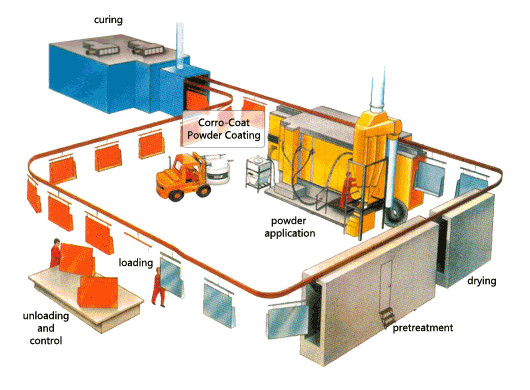Powder Coating Process
Related Article: What is Electrostatic Painting Process
Powder Coating Process
Pre-treatment – drying to remove water – spraying – Check – baking – check – Finished.
1.The characteristics of the powder coating can give full play to extend the coating life to break the painted surface first strictly surface pre-treatment.
2.Spray, was painted to be fully grounded in order to increase the efficiency of the powder coating of puffing.
3.The larger surface defects to be painted, coated scratch conductive putty, in order to ensure the formation of the coating and smooth.
4.Spray the need for heat curing, curing conditions prevail in powder product technical indicators but must be fully guaranteed cure temperature and time, to avoid curing caused by insufficient quality of the accident.
5.Immediately dusting after examination, if a defect is discovered should be promptly dealt, after curing a defect is discovered, its scope is only partial without affecting the painted surface decoration that can be used to repair the same color powder with acetone diluted, if the range affect the surface quality, use sandpaper, then spray once or use paint remover to remove the coating, and then re-spray powder.
6.Recovery of powder to be filtered to remove debris after a certain percentage of new powder mixing.
7.For the powder barrel, powder room and recovery system should avoid the pollution of a different color powder, so each time you change the color must be purged.

The widely-used methods in powder coating process are fluidized bed , electrostatic corona spraying and tribostatic spraying .
Advantages include : Heavy films ; High transfer efficiency; Applies quickly; Can be automated ;Minimum operator training; Works with most chemistry system.
Corona Spraying
Advantages include :
- Heavy films ;
- High transfer efficiency;
- Applies quickly;
- Can be automated ;
- Minimum operator training;
- Works with most chemistry system.
Disadvantages include:
- Difficult color changes in automatic systems comparable to tribo systems;
- Require high voltage source;
- Difficulty with deep recesses;
- Thickness control sometimes difficult;
- Capital cost higher than other methods.

 D5 Creation
D5 Creation
Comments are Closed